- The Garden of Cosmic Speculation [23 pics]
- Picture of the Day: Sunset on Mars
- 25 Hilarious Halloween Costumes from the Weekend
- Picture of the Day: Incredible Huaxi Village Skyscraper in China
- The World’s Fastest Animals on Land, Sea and Air
- Picture of the Day: Uncovering History
- An Iranian-American Self Study by Natalie Abbassi
- Safety Tips From Anubis [Comic Strip]
- Picture of the Day: Paris at Night
- The Friday Shirk Report – Volume 133
Posted: 01 Nov 2011 06:05 AM PDT 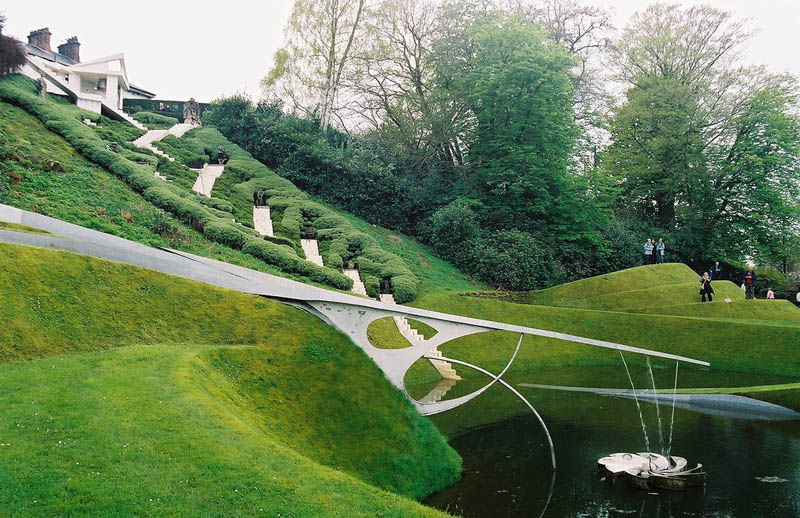 Photograph by PAULUS MAXIMUS Once a year in May, the Garden of Cosmic Speculation by Charles Jencks is open to the public. The garden is located on a private residence known as the Portrack House near the town of Dumfries in Scotland. Started in 1988 it was dedicated to Jencks’ late wife Maggie Keswick. The garden has such a name because Jencks, Keswick, scientists, and their friends designed the garden based on natural and scientific processes. Jencks goal was to celebrate nature, but he also incorporated elements from the modern sciences into the design. Below you will find a collection of pictures, most by photographer Paulus Maximus, who took two trips to the Garden in 2006 and 2008; along with additional information on the garden and Charles Jencks himself. Enjoy! 2.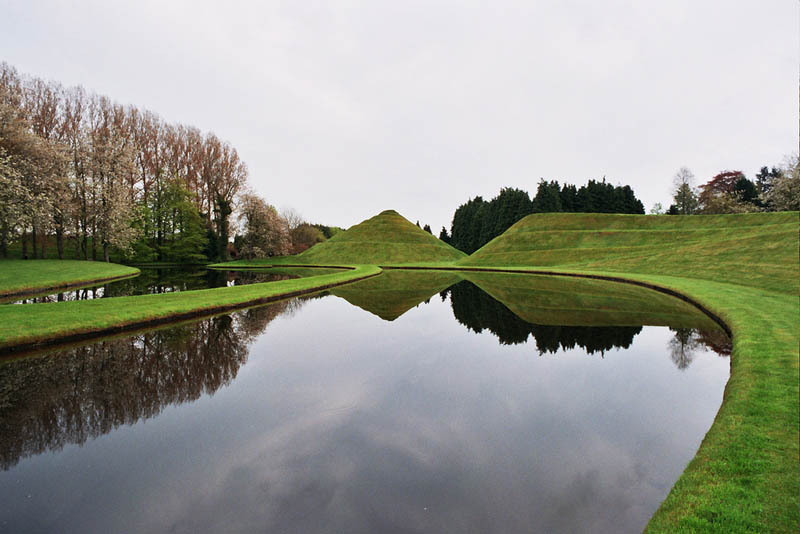 Photograph by PAULUS MAXIMUS 3.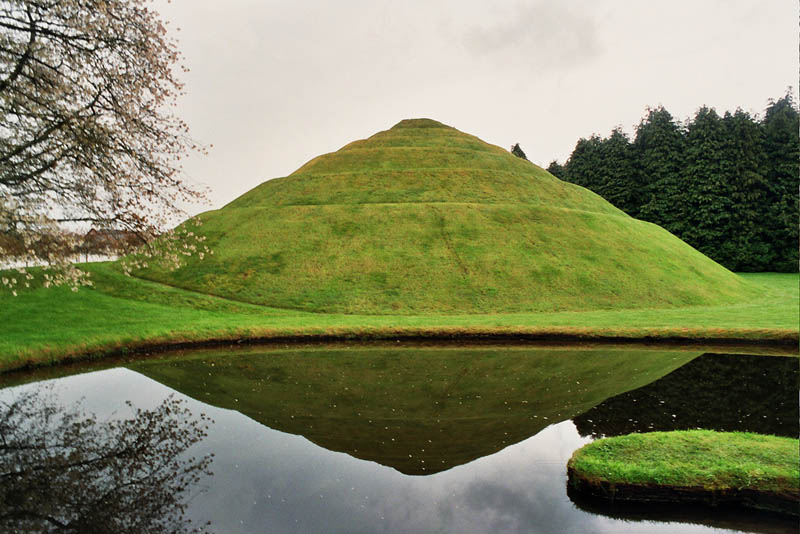 Photograph by PAULUS MAXIMUS The snail mound allows visitors to explore and learn about the Fibonacci sequence 4.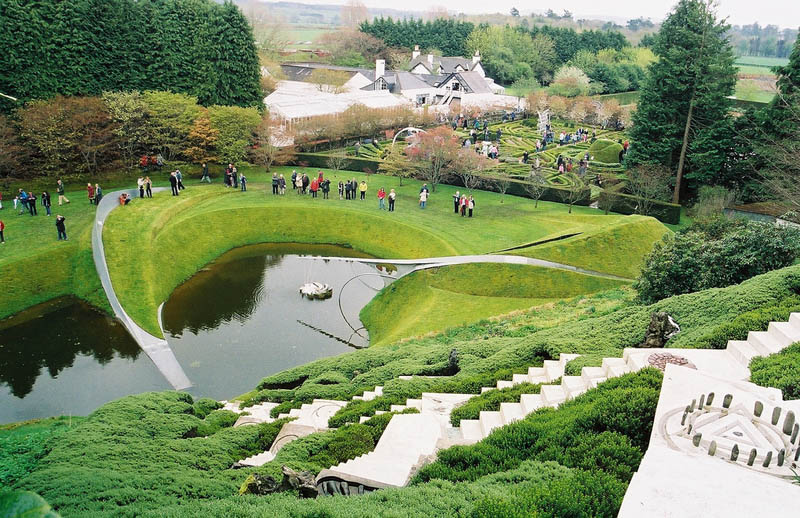 Photograph by PAULUS MAXIMUS 5.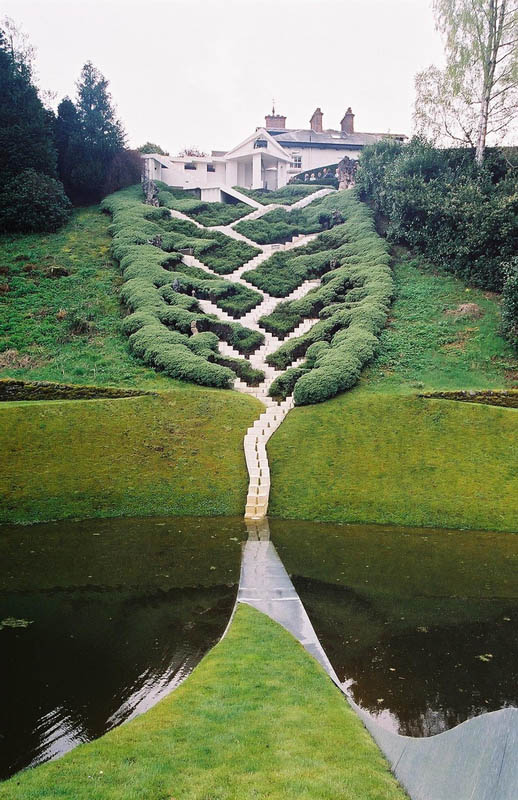 Photograph by PAULUS MAXIMUS 6.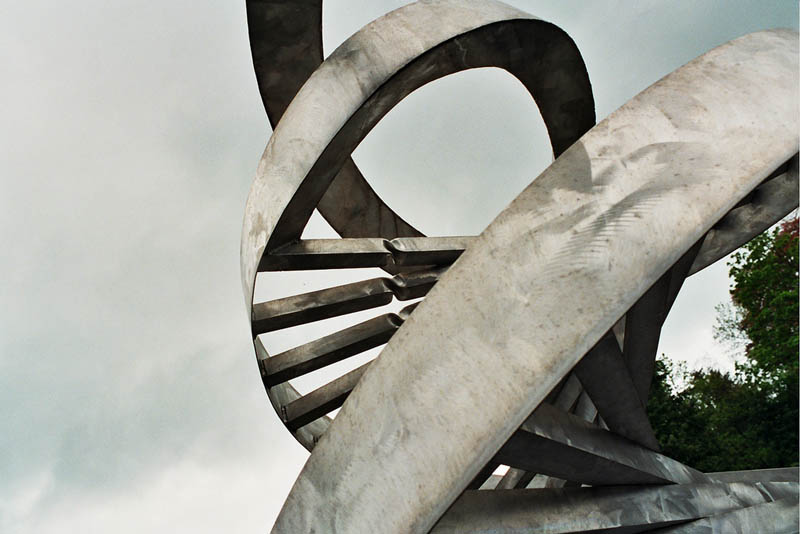 Photograph by PAULUS MAXIMUS DNA’s double helix 7.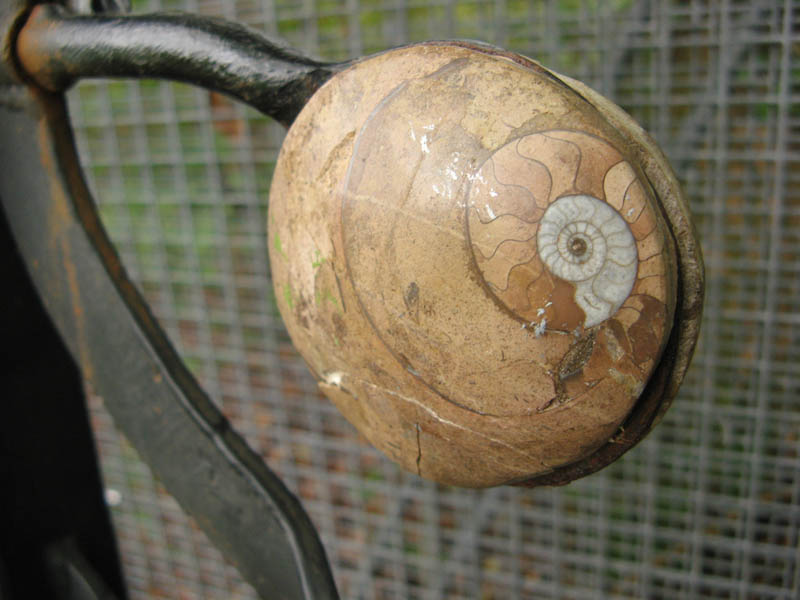 Photograph by PAULUS MAXIMUS Fibonacci sequence 8.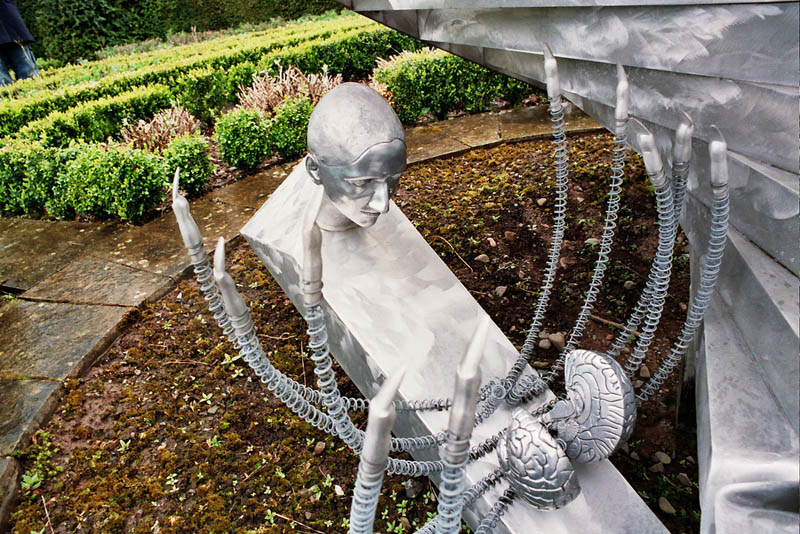 Photograph by PAULUS MAXIMUS 9.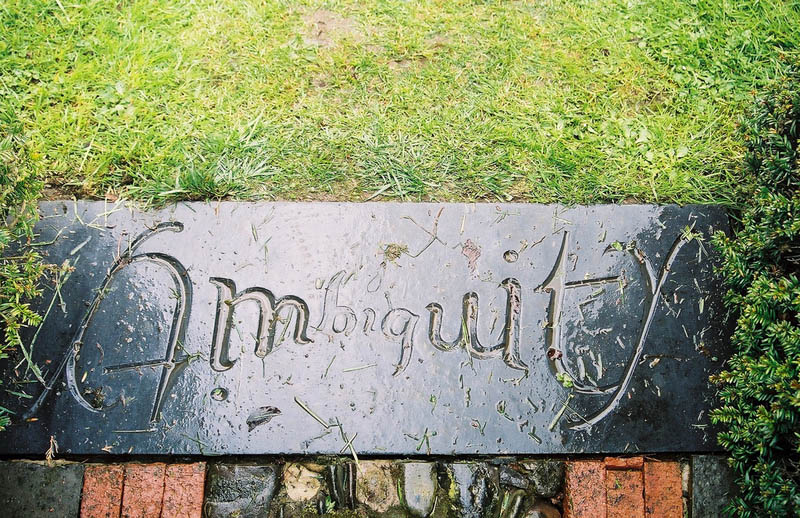 Photograph by PAULUS MAXIMUS 10.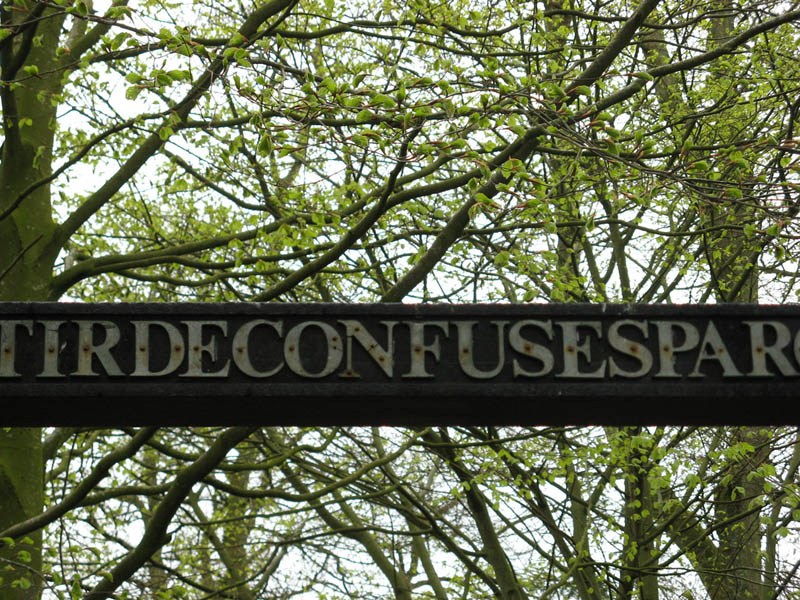 Photograph by PAULUS MAXIMUS THE GARDEN OF COSMIC SPECULATION BY CHARLES JENCKSPreserving paths and the beauty of the garden is still evident but Jencks enhances the garden using new tools and artificial materials. Just as Japanese Zen gardens, Persian paradise gardens, the English and French Renaissance gardens were analogies of the cosmic universe, the design of Jencks’ garden represents the cosmic and cultural evolution of the contemporary world. The garden represents a microcosm of the universe. As one walks through the garden they are experiencing the cosmic universe in miniature. According to Jencks, gardens are like autobiographies because they reveal the happiest moments, the tragedies, and the truths about a person. As the garden developed since 1988, so too did such sciences as cosmology and this allowed a dynamic interaction between the unfolding universe, a progressing science and design. Jencks believes that contemporary science is potentially the greatest moving force for creativity of our time because it tells us the truth about the way the universe is. Cosmic passion, the desire both to know and to relate to the universe, is one of the strongest drives in sentient creatures. The laws of nature may be omnipotent, but they can also be challenged. A garden is a perfect place to try out these speculations and celebrations because it is a bit of man-made nature, a fabricated and ideal cosmic landscape, and a critique of the way the universe is. Jencks has become a leading figure in British landscape architecture. His landscape work is inspired by fractals, genetics, chaos theory, waves and solitons. In Edinburgh, Scotland, he designed the Landform at the Scottish National Gallery of Modern Art in collaboration with Terry Farrell and Duncan Whatmore of Terry Farrell and Partners. These themes are expanded in his own private garden, the Garden of Cosmic Speculation, at Portrack House near Dumfries. He is also a furniture designer and sculptor, completing the DNA Sculpture in London’s Kew Gardens in 2003. Jencks studied under the Modern architectural historians Siegfried Giedion and Reyner Banham. He first received his BA in English Literature at Harvard University in 1961, later gaining an MA in architecture from the Graduate School of Design in 1965. He took his studies even further and received his PhD in Architectural History from University College, London in 1970. [Source] 11.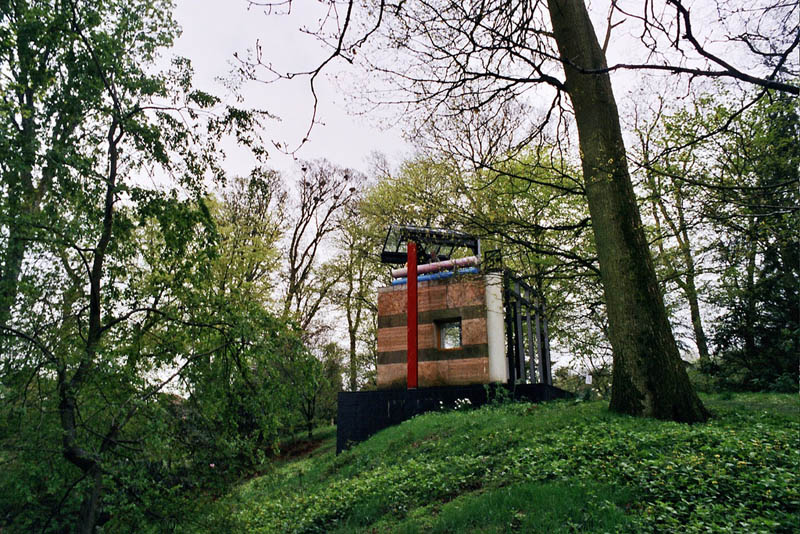 Photograph by PAULUS MAXIMUS Nonsense Pavilion designed by James Stirling 12.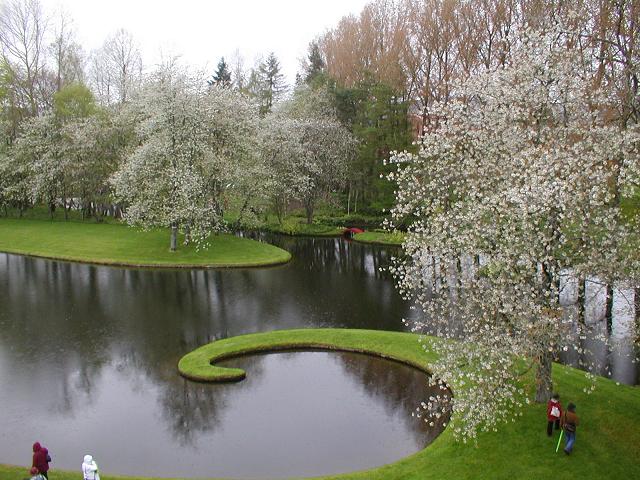 Photograph by FLEXDREAM Fractal landscapes and black hole pools 13.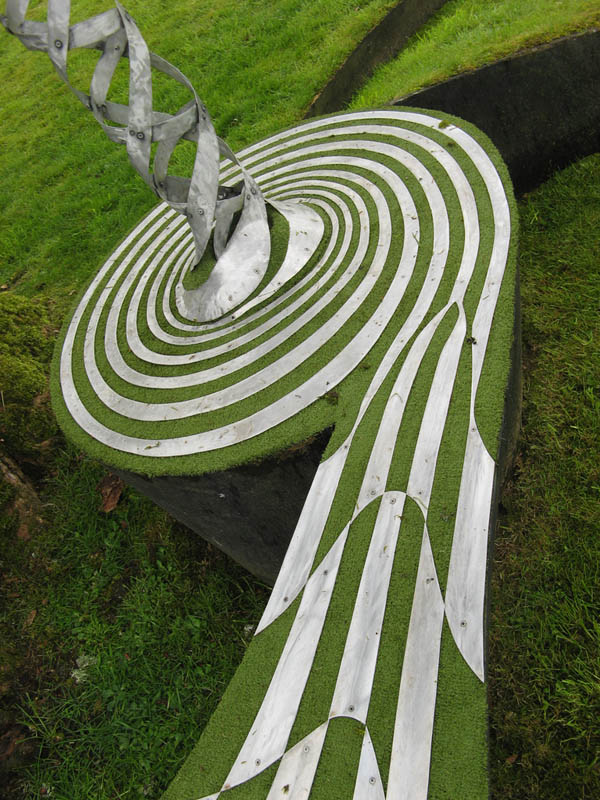 Photograph by PAULUS MAXIMUS 14.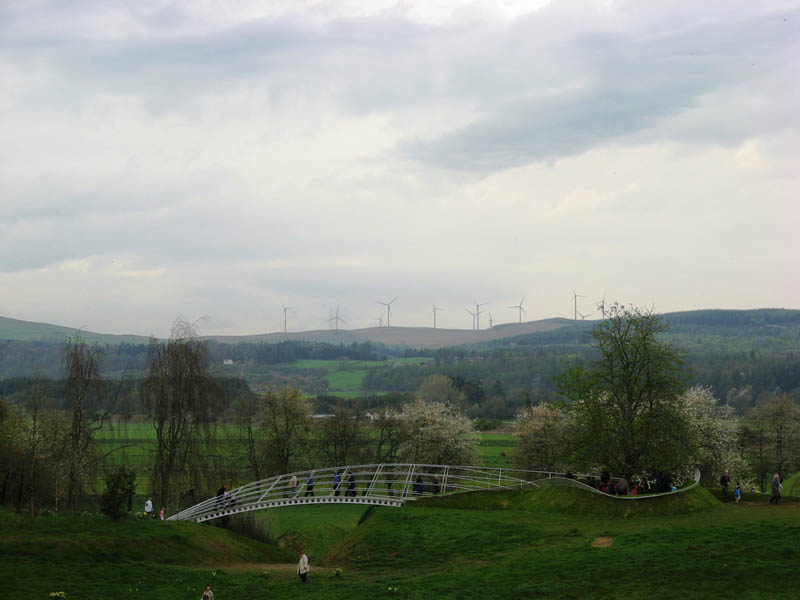 Photograph by PAULUS MAXIMUS 15.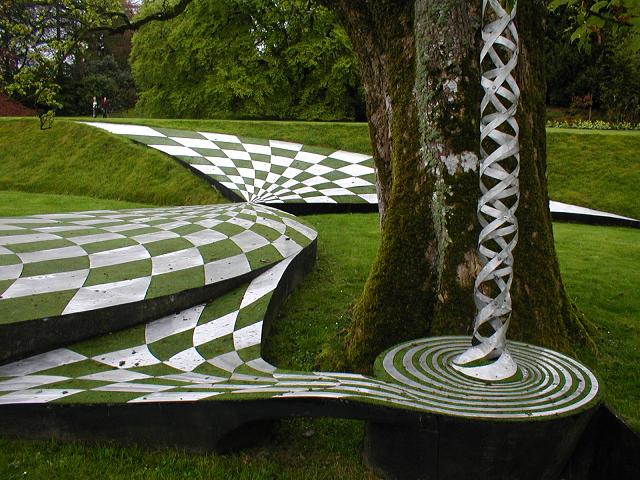 Photograph by FLEXDREAM 16.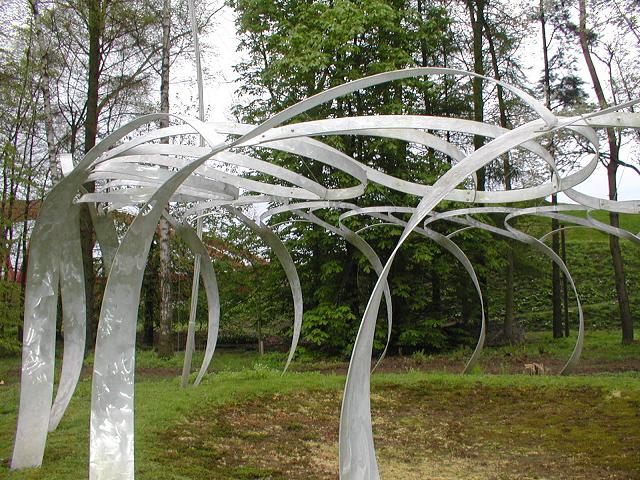 Photograph by FLEXDREAM 17.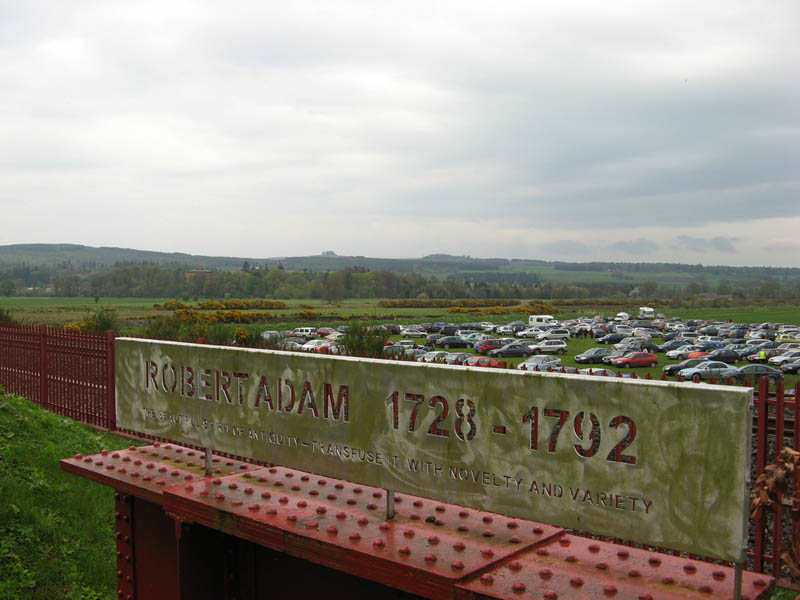 Photograph by PAULUS MAXIMUS 18.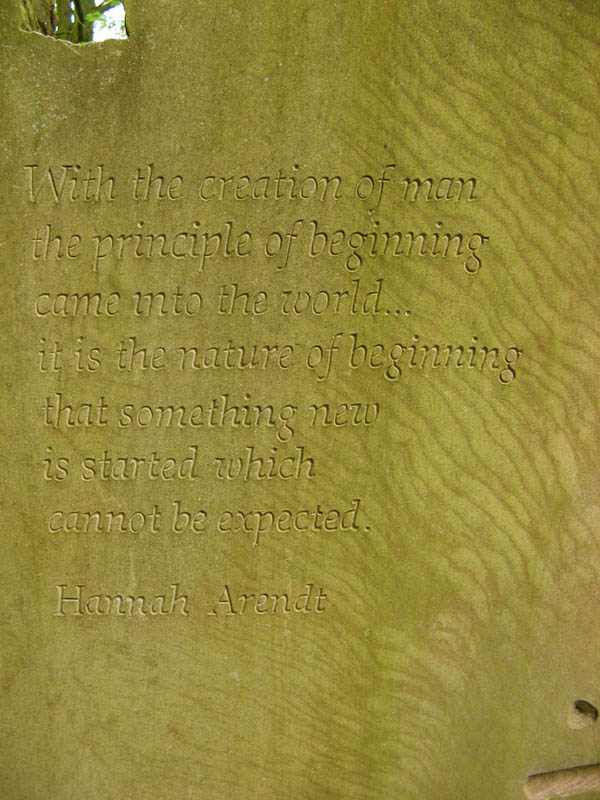 Photograph by PAULUS MAXIMUS 19.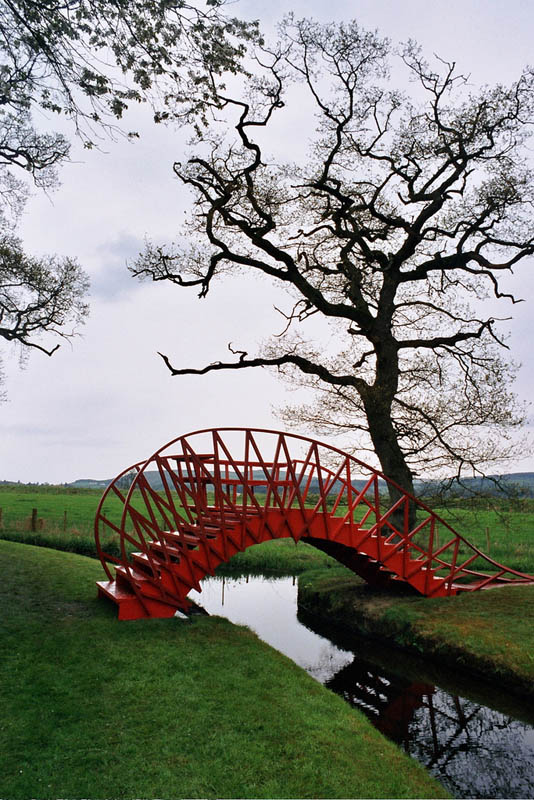 Photograph by PAULUS MAXIMUS 20.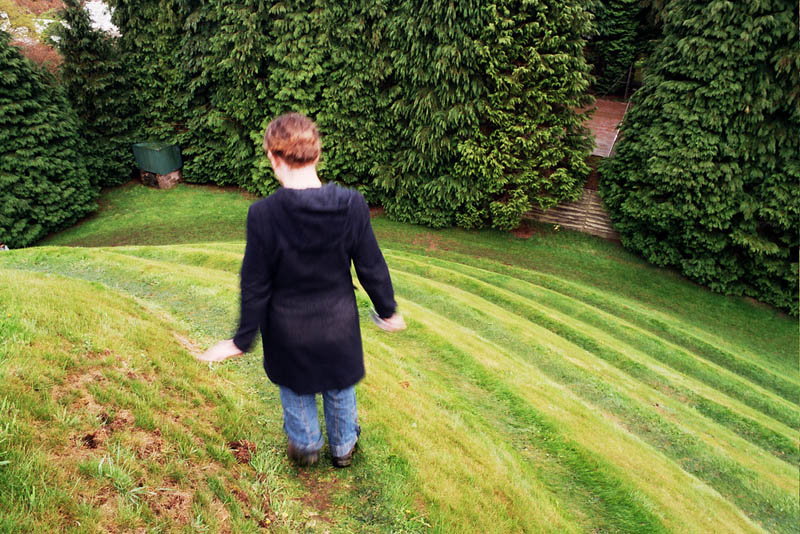 Photograph by PAULUS MAXIMUS 21.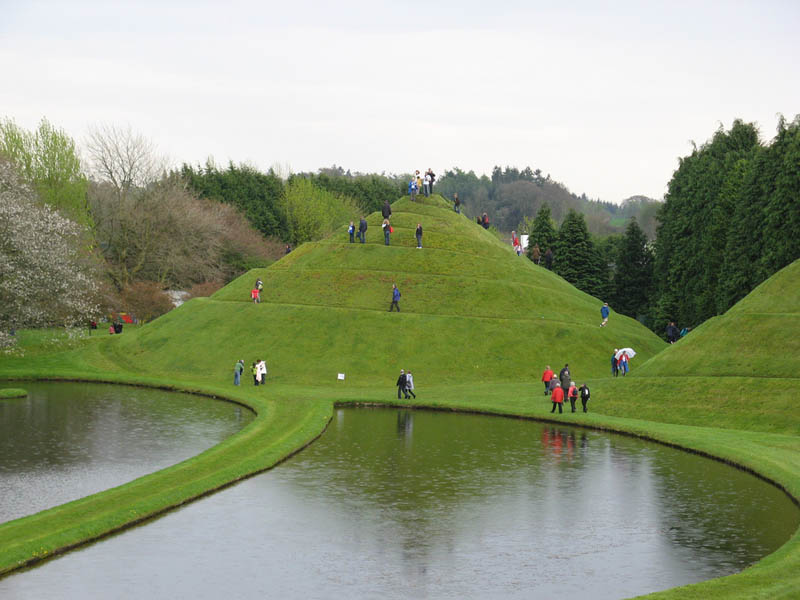 Photograph by PAULUS MAXIMUS 22.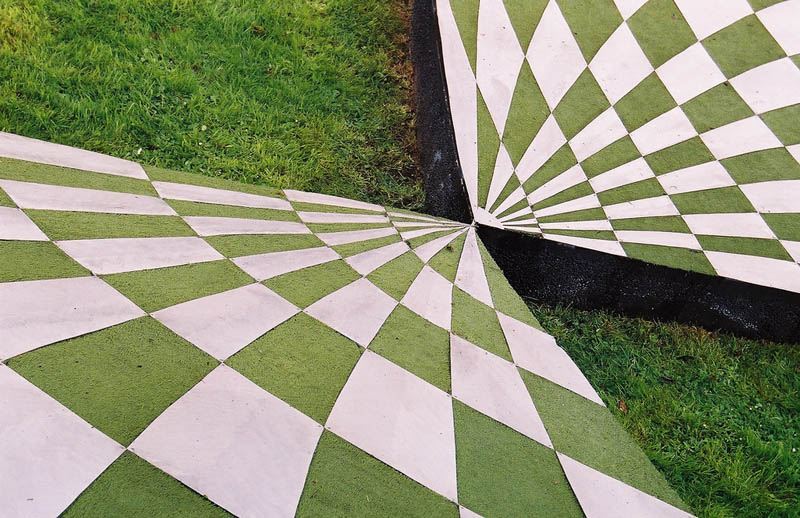 Photograph by PAULUS MAXIMUS 23.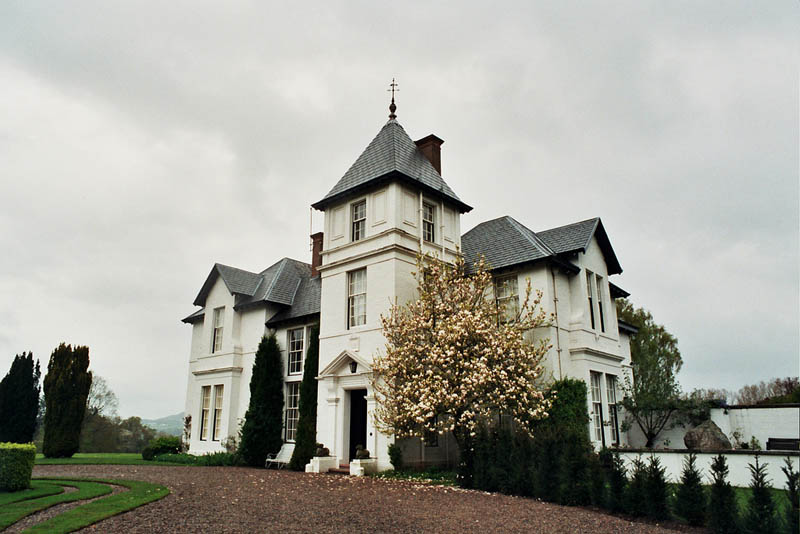 Photograph by PAULUS MAXIMUS Sources- Photography of Paulus Maximus- Wikipedia Article on Charles Jencks - Charles Jencks official site - Blog post by Kuriositas If you enjoyed this post, the Sifter highly recommends:15 Incredible Vertical Gardens Around the World 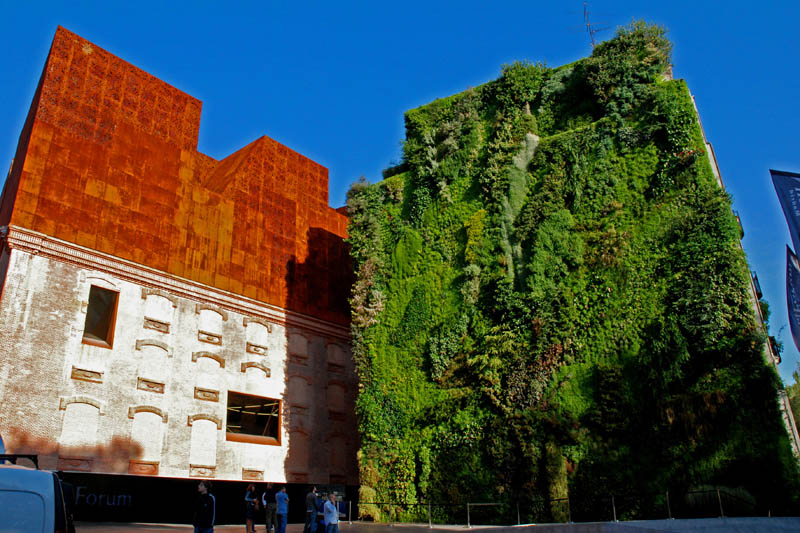 |
Posted: 31 Oct 2011 02:00 PM PDT SUNSET ON MARS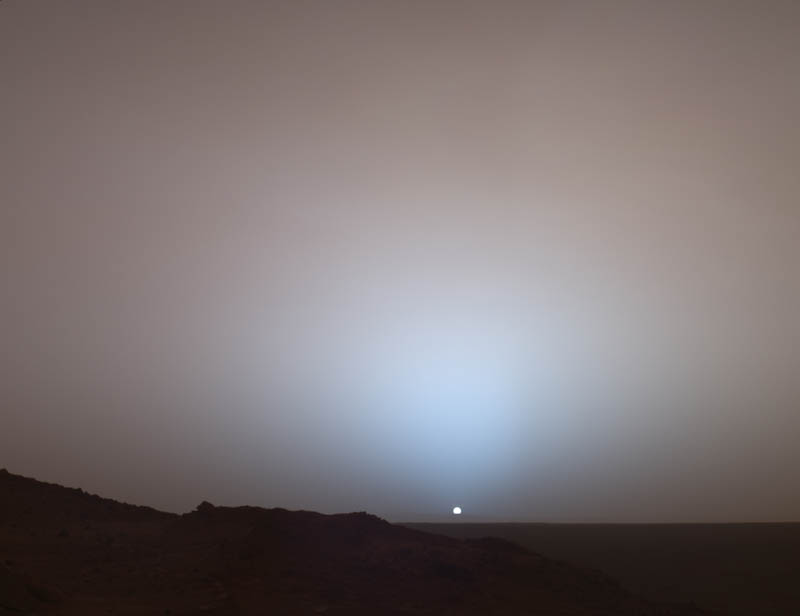 Photograph by NASA/JPL/Texas A&M/Cornell On May 19th, 2005, NASA's Mars Exploration Rover Spirit captured this stunning view of the Sun sinking below the rim of Gusev crater on Mars. This Panoramic Camera (Pancam) mosaic was taken around 6:07 in the evening of the rover's 489th Martian day, or sol. Spirit was commanded to stay awake briefly after sending that sol's data to the Mars Odyssey orbiter just before sunset. This small panorama of the western sky was obtained using Pancam's 750-nanometer, 530-nanometer and 430-nanometer color filters. This filter combination generates false-color images that are similar to what a human would see, but with the colors slightly exaggerated. In this image, the bluish glow in the sky above the Sun would be visible to us if we were there, but an artifact of the Pancam's infrared imaging capabilities is that with this filter combination, the redness of the sky farther from the sunset is exaggerated compared to the daytime colors of the Martian sky. Because Mars is farther from the Sun than the Earth is, the Sun appears only about two-thirds the size that it appears in a sunset seen from the Earth. The terrain in the foreground is the rock outcrop "Jibsheet", a feature that Spirit has been investigating for several weeks. The floor of Gusev crater is visible in the distance, and the Sun is setting behind the wall of Gusev some 80 kilometers (50 miles) in the distance. [Source] via NASA: Earth Observatory |
Posted: 31 Oct 2011 06:17 AM PDT  Trollface Every Halloween, hundreds of Reddit users upload photos of their awesome Halloween costumes. This year saw no shortage of funny and creative executions that surely enhanced the evenings of those around them. Enjoy this small collection of hilarious costumes spotted this past weekend. Until next year, have a Happy Halloween ya’ll! 2. Animal (Muppets) 3. Carlton Banks 4. Angelina Jolie 5. Black Swan 6. Ace & Gary (Ambiguously Gay Duo)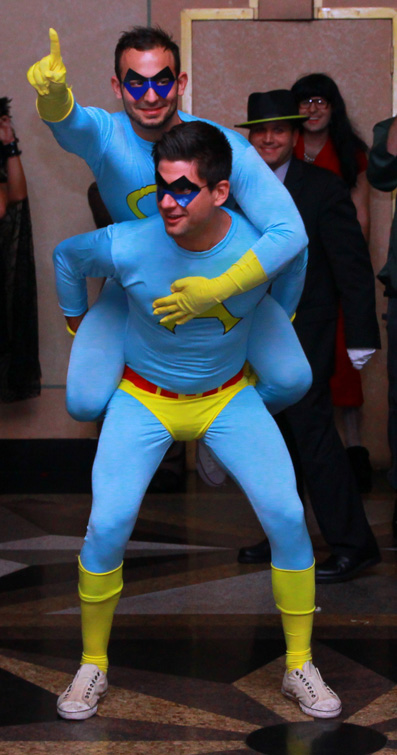 7. The Honey Badger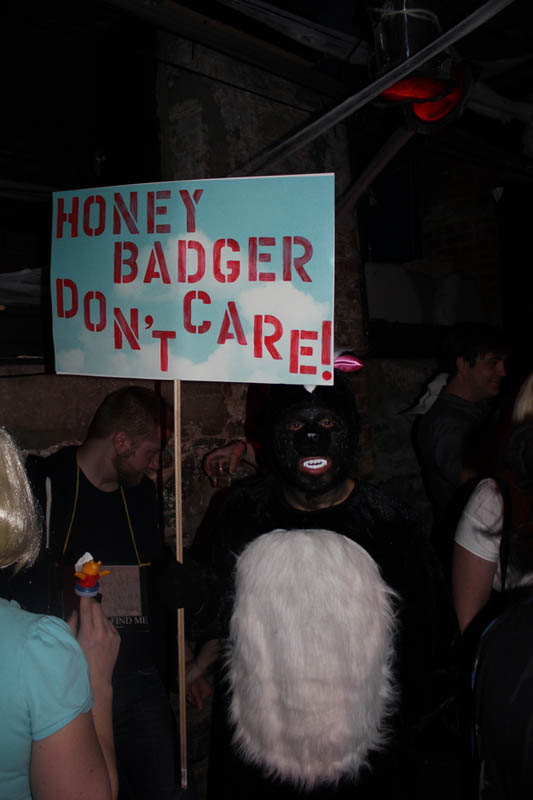 8. Rachel Ray 9. Bananverine? 10. Peg Bundy 11. Steve Urkel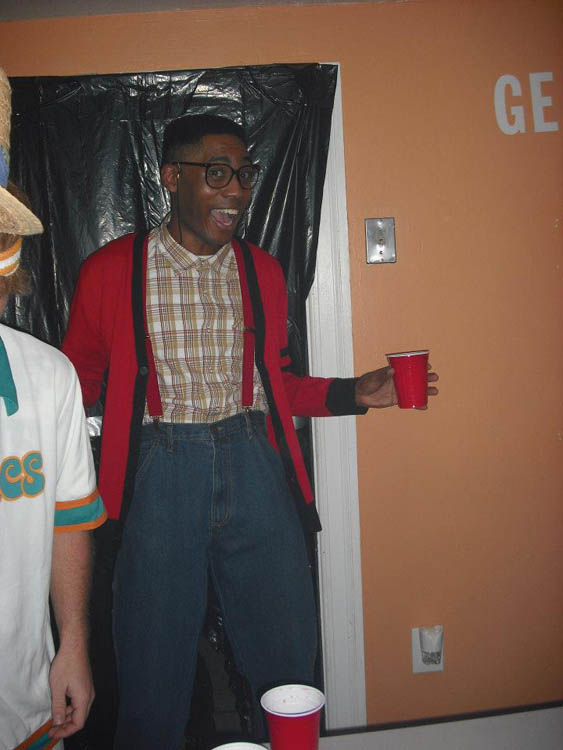 12. Salsa Picante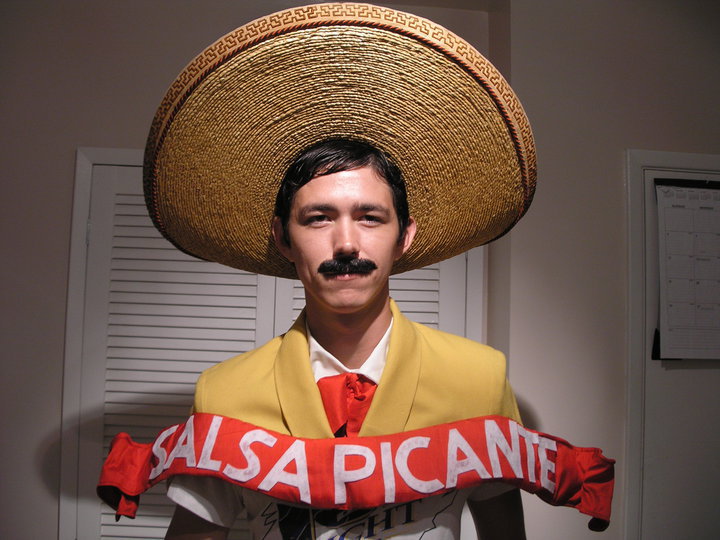 13. Chia Pet Dog 14. Walter Sobchak (Big Lebowski)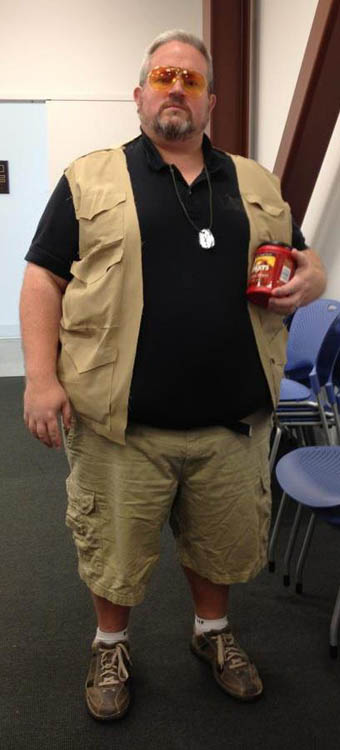 15. Pikachu 16. Zig Zags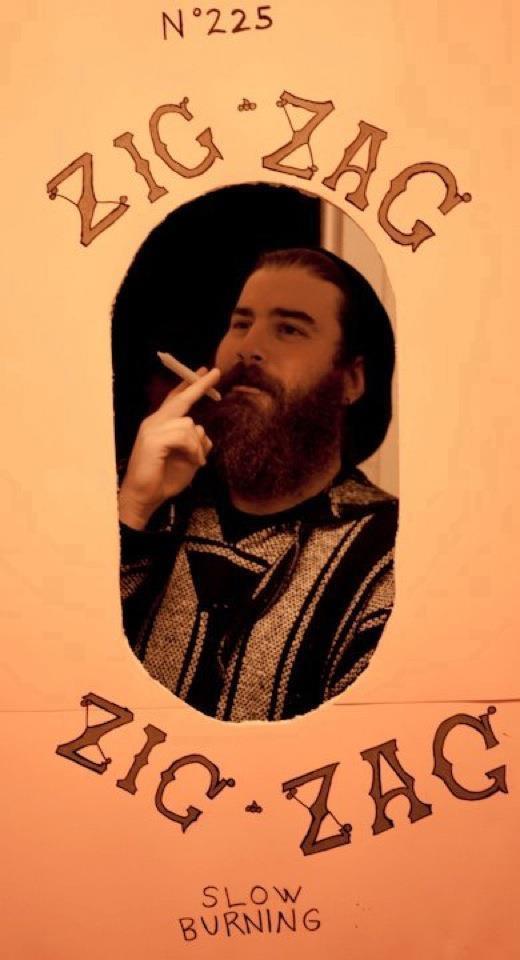 17. Bruce Lee 18. James Bond 007 ‘DK Mode’ (Goldeneye) 19. AT-AT Dog 20. Fantasy Football 21. Ewok 22. Lego Men 23. D*ck in a Box 24. Ruby Rhod (Fifth Element)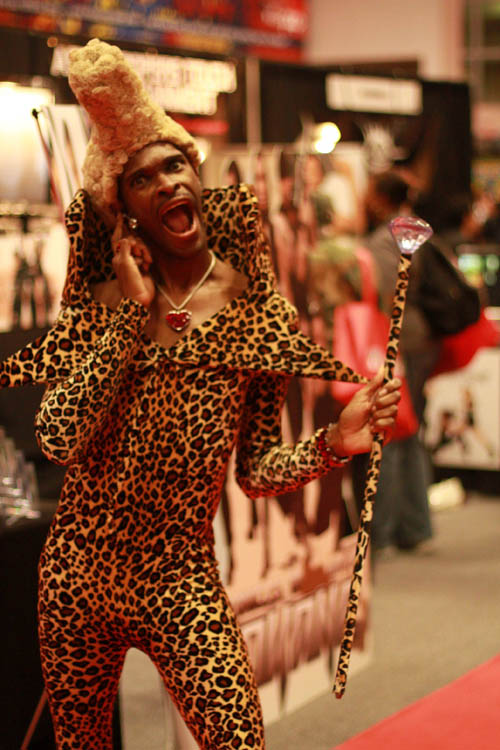 25. Snooki If you enjoyed this post, this Sifter highly recommends:Another 25 Hilarious Halloween Costumes  |
Posted: 30 Oct 2011 02:00 PM PDT INCREDIBLE HUAXI VILLAGE SKYSCRAPER IN CHINA Photograph via Reuters/Carlos Barria The newly inaugurated skyscraper tower of Huaxi village is seen in Huaxi village, Jiangsu province, on October 7, 2011. Huaxi, also known as China’s richest village, celebrated its 50th anniversary with the inauguration of a massive 328-meter (1,076 feet) high skyscraper that screams for attention from its lowly skyline. A solid gold bull weighing a ton also greets visitors at a viewing area on the 60th-floor of the tower, a testament to the wealth of the village. In Huaxi, those from the original 2,000 residents have at least a house, a car, and $250,000 in the bank and enjoy universal health care and free education. Officials from elsewhere in China tour Huaxi to find out how this once sleepy village, with just 576 residents in the 1950s, is now so rich and why non-local businessmen would donate million-dollar factories to buy the privilege of a local residence permit. [Source] via The Atlantic – In Focus with Alan Taylor: 21st Century China |
Posted: 30 Oct 2011 08:00 AM PDT 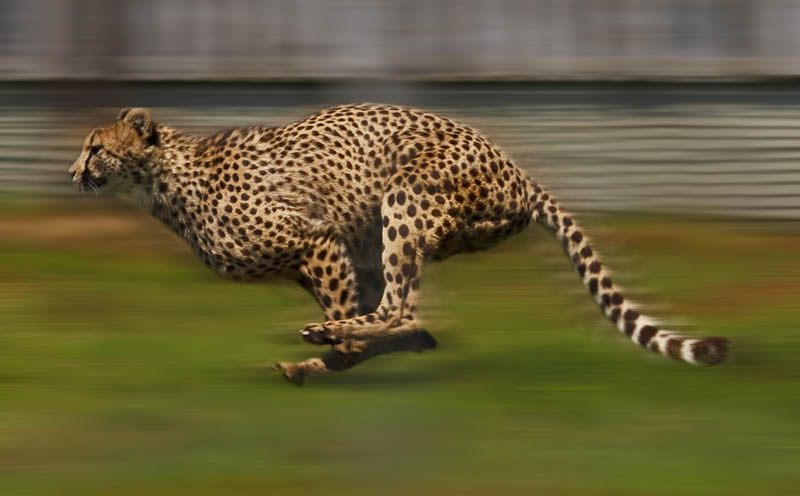 Photograph by DECKSTER1965 CHEETAHS: THE WORLD’S FASTEST LAND ANIMALSThe cheetah (Acinonyx jubatus) is a large-sized feline inhabiting most of Africa and parts of the Middle East. They are the only felid with non-retractable claws and pads that, by their scope, disallow gripping (therefore cheetahs cannot climb vertical trees, although they are generally capable of reaching easily accessible branches). The cheetah, however, achieves by far the fastest land speed of any living animal—between 112 and 120 km/h (70 and 75 mph) in short bursts covering distances up to 500 m (1,600 ft), and has the ability to accelerate from 0 to over 100 km/h (62 mph) in three seconds. Adaptations that enable the cheetah to run as fast as it does include large nostrils that allow for increased oxygen intake, and an enlarged heart and lungs that work together to circulate oxygen efficiently. During a typical chase, its respiratory rate increases from 60 to 150 breaths per minute. While running, in addition to having good traction due to its semi-retractable claws, the cheetah uses its tail as a rudder-like means of steering to allow it to make sharp turns, necessary to outflank prey animals that often make such turns to escape. [Source] 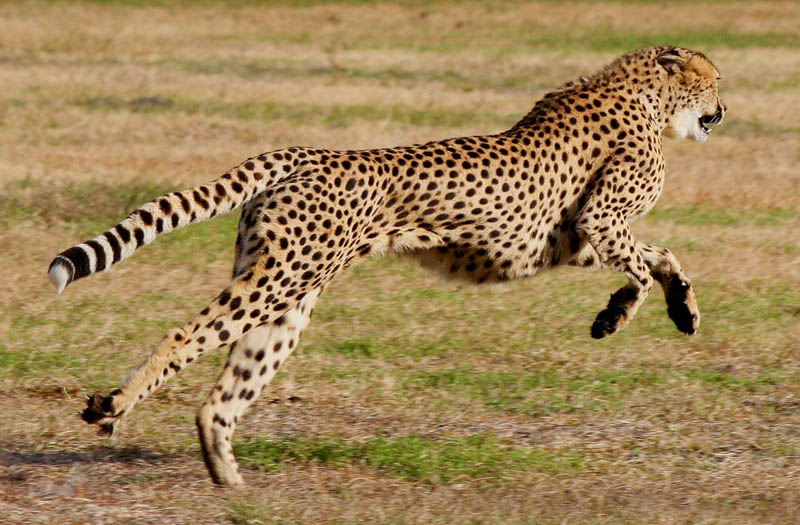 Photograph by GARY EYRING 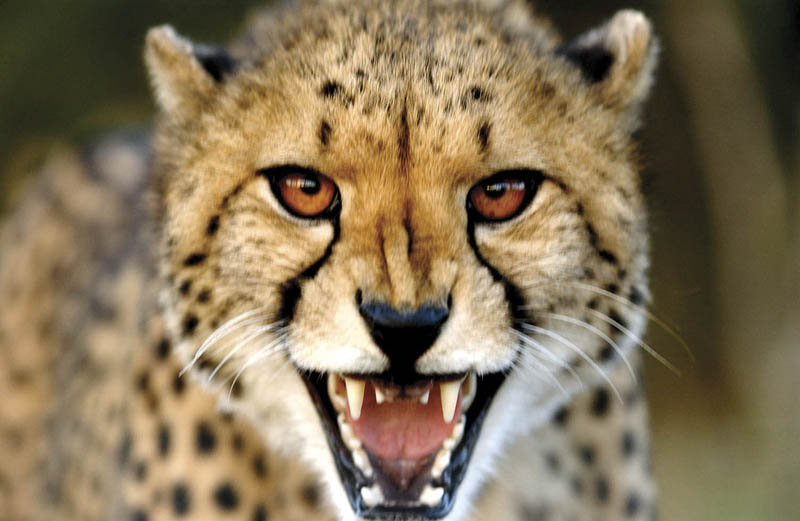 Photograph by SAFARI PARTNERS 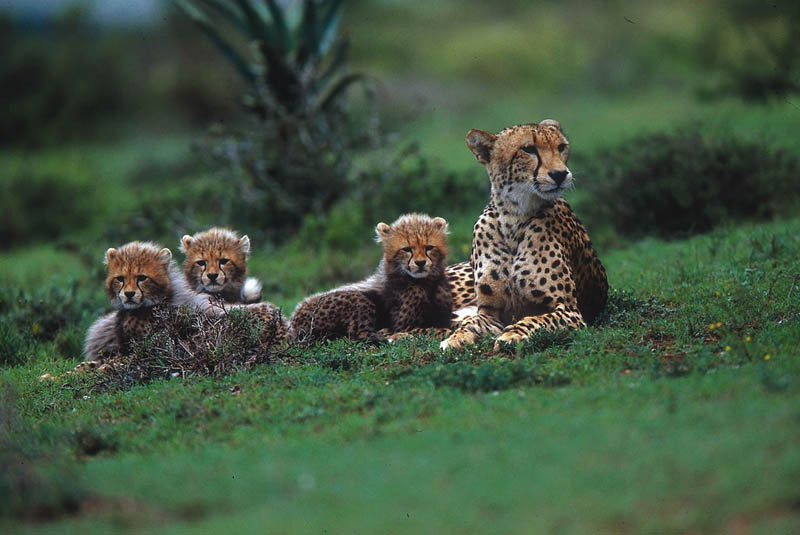 Photograph by SAFARI PARTNERS 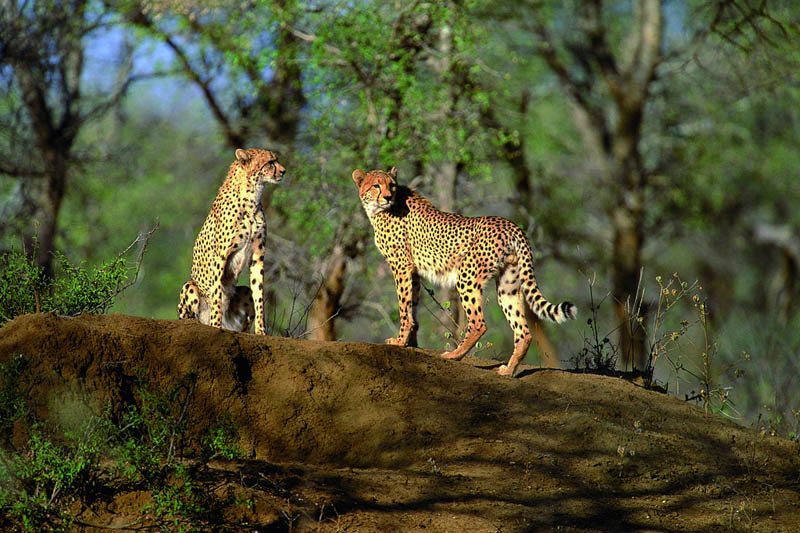 Photograph by SAFARI PARTNERS SAILFISH: THE WORLD’S FASTEST ANIMALS IN WATER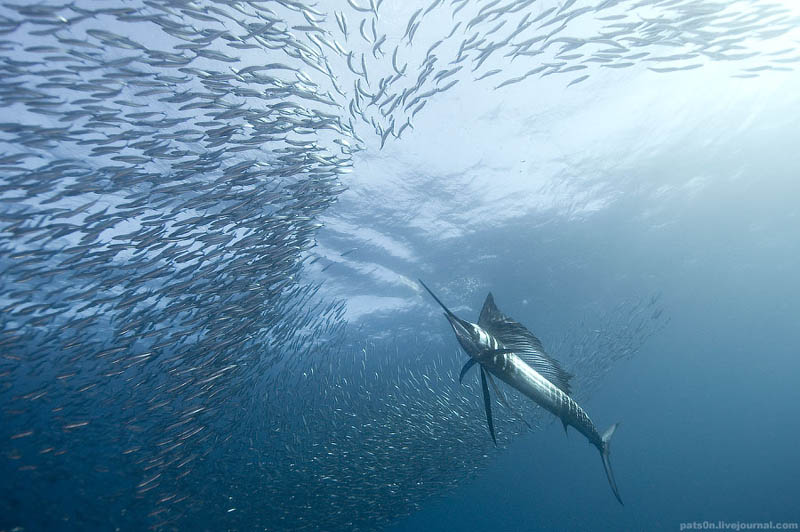 Photograph by ALEXANDER SAFONOV Sailfish are two species of fish in the genus Istiophorus, living in warmer sections of all the oceans of the world. They are predominately blue to gray in color and have a characteristic erectile dorsal fin known as a sail, which often stretches the entire length of the back. Another notable characteristic is the elongated bill, resembling that of the swordfish and other marlins. They are therefore described as billfish in sport fishing circles. Both species of sailfish grow quickly, reaching 1.2–1.5 metres (3 ft 10 in–4 ft 10 in) in length in a single year, and feed on the surface or at mid-depths on smaller pelagic forage fish and squid. Individuals have been clocked at speeds of up to 110 kilometres per hour (68 mph), which is the highest speed reliably reported in a fish. Generally, sailfish do not grow to more than 3 metres (9.8 ft) in length and rarely weigh over 90 kilograms (200 lb). The sail is normally kept folded down and to the side when swimming, but it may be raised when the sailfish feels threatened or excited, making the fish appear much larger than it actually is. This tactic has also been observed during feeding, when a group of sailfish use their sails to “herd” a school of fish or squid. Sailfish are highly prized game fish and are known for their incredible jumps. They can appear in a startling array of colors, from subdued browns and grays to vibrant purples and even silver. Their body colors are often highlighted by stripes of iridescent blue and silver dots. Sailfish can change their colors almost instantly; a change controlled by their nervous system. The sailfish can rapidly turn its body light blue with yellowish stripes when excited, confusing its prey and making capture easier, while signalling its intentions to fellow sailfish. [Source] 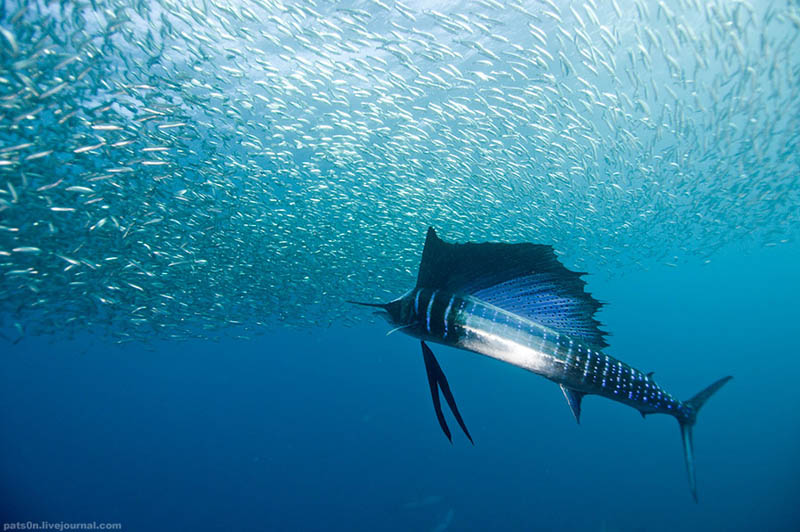 Photograph by ALEXANDER SAFONOV 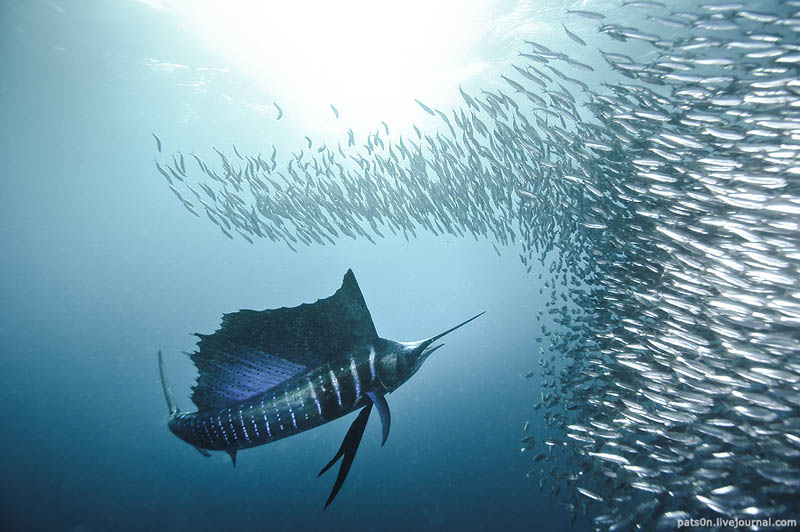 Photograph by ALEXANDER SAFONOV 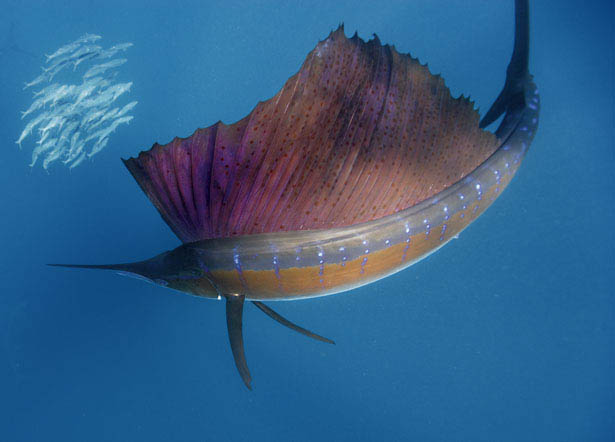 Photograph by PAUL NICKLEN PEREGRINE FALCONS: FASTEST ANIMALS IN THE WORLD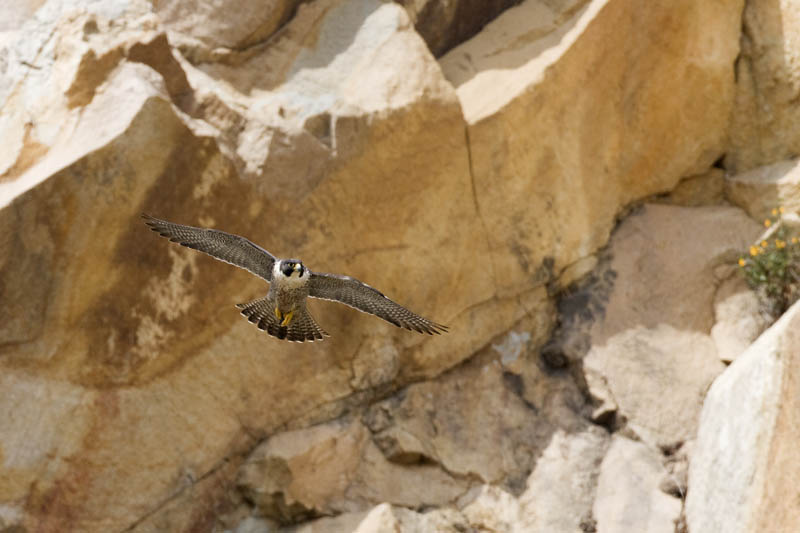 Photograph by KEVIN COLE The Peregrine Falcon (Falco peregrinus), is a widespread bird of prey in the family Falconidae. A large, crow-sized falcon, it has a blue-gray back, barred white underparts, and a black head and “moustache”. The Peregrine is renowned for its speed, reaching over 325 km/h (202 mph) during its characteristic hunting stoop, making it the fastest member of the animal kingdom. The Peregrine’s breeding range includes land regions from the Arctic tundra to the tropics. It can be found nearly everywhere on Earth, except extreme polar regions, very high mountains, and most tropical rainforests; the only major ice-free landmass from which it is entirely absent is New Zealand. This makes it the world’s most widespread bird of prey. [Source] 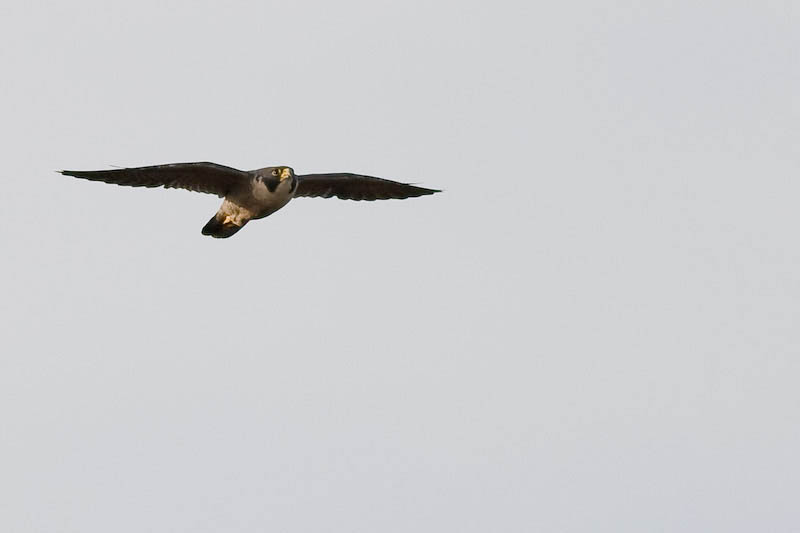 Photograph by STEVE HAPP 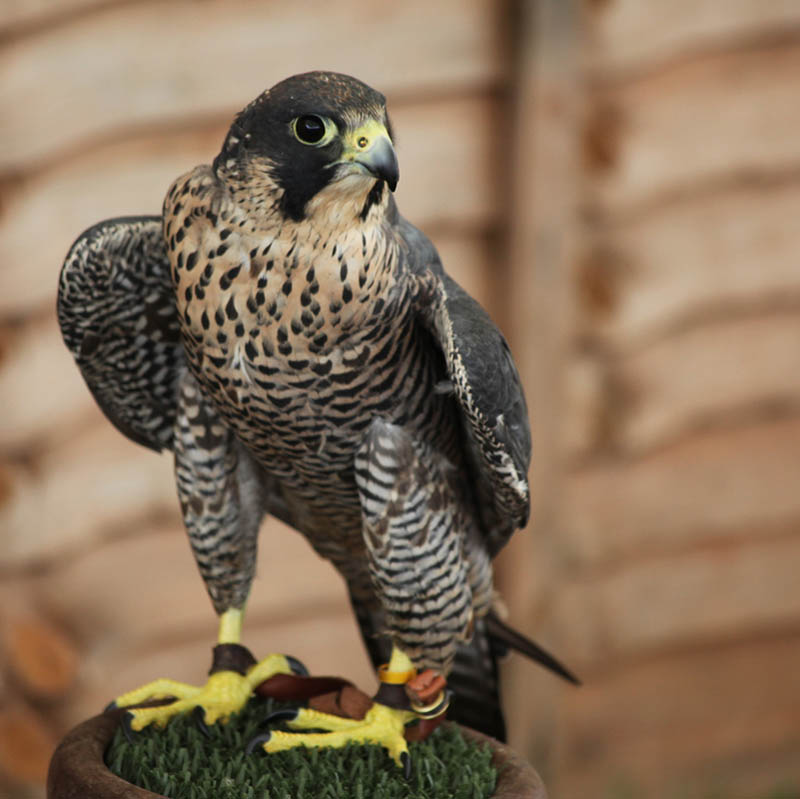 Photograph by JOHN DALKIN  Photograph by NEIL O’REILLY 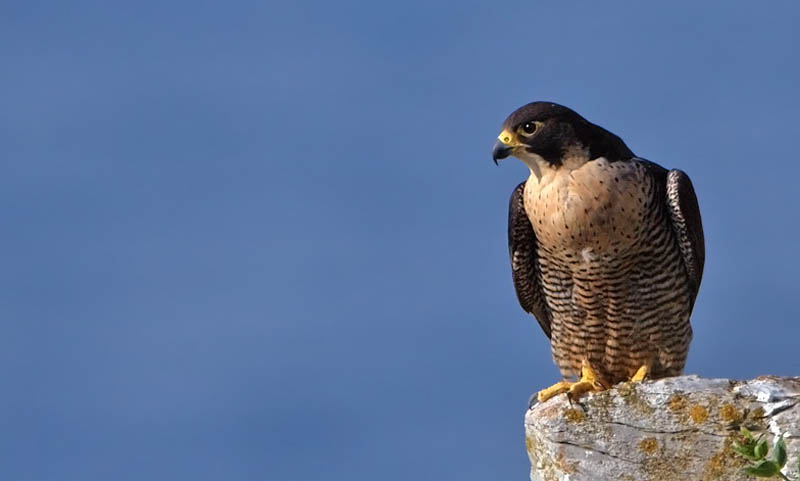 Photograph by PETE WALKDEN If you enjoyed this post, the Sifter highly recommends:Top 10 Facts of the World's Largest Land Animal [20 pics] 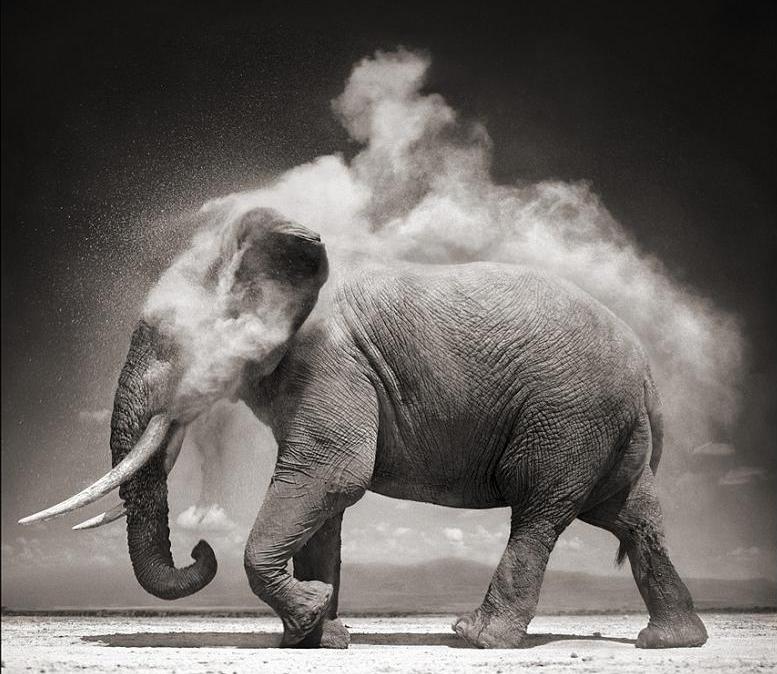 |
Posted: 29 Oct 2011 03:00 PM PDT UNCOVERING HISTORY Photograph via Reddit Moai are monolithic human figures carved from rock on the Polynesian island of Easter Island between the years 1250 and 1500. Nearly half are still at Rano Raraku, the main moai quarry, but hundreds were transported from there and set on stone platforms called ahu around the island’s perimeter. Almost all moai have overly large heads three-fifths the size of their bodies. The moai are chiefly the living faces (aringa ora) of deified ancestors (aringa ora ata tepuna). The statues still gazed inland across their clan lands when Europeans first visited the island, but most would be cast down during later conflicts between clans. The 887 statues’ production and transportation is considered a remarkable creative and physical feat. The tallest moai erected, called Paro, was almost 10 metres (33 ft) high and weighed 82 tons; the heaviest erected was a shorter but squatter moai at Ahu Tongariki, weighing 86 tons; and one unfinished sculpture, if completed, would have been approximately 21 metres (69 ft) tall with a weight of about 270 tons. [Source] via REDDIT |
Posted: 29 Oct 2011 10:30 AM PDT  Photograph by NATALIE NAZANIN ABBASSI Self Study by Natalie Nazanin Abbassi, was the photographer’s final project as a student at the University of North Carolina’s Design and Visual Communication program. It’s a fascinating series of self-portraits that explores who she is as both an American and Iranian woman. In each composite image, Natalie captures herself twice, once as the Iranian and once as the American. Enjoy this small sample below and be sure to visit Natlie’s official site to see the rest of this wonderful exploration.  Photograph by NATALIE NAZANIN ABBASSI 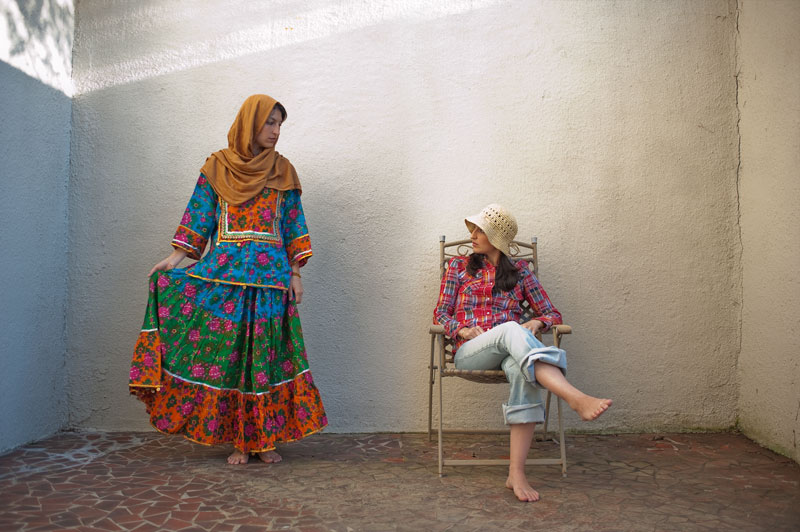 Photograph by NATALIE NAZANIN ABBASSI  Photograph by NATALIE NAZANIN ABBASSI  Photograph by NATALIE NAZANIN ABBASSI  Photograph by NATALIE NAZANIN ABBASSI If you enjoyed this post, the Sifter highly recommends:Recreating Photos from Childhood [25 pics]  |
Posted: 29 Oct 2011 06:05 AM PDT |
Posted: 28 Oct 2011 02:00 PM PDT PARIS AT NIGHT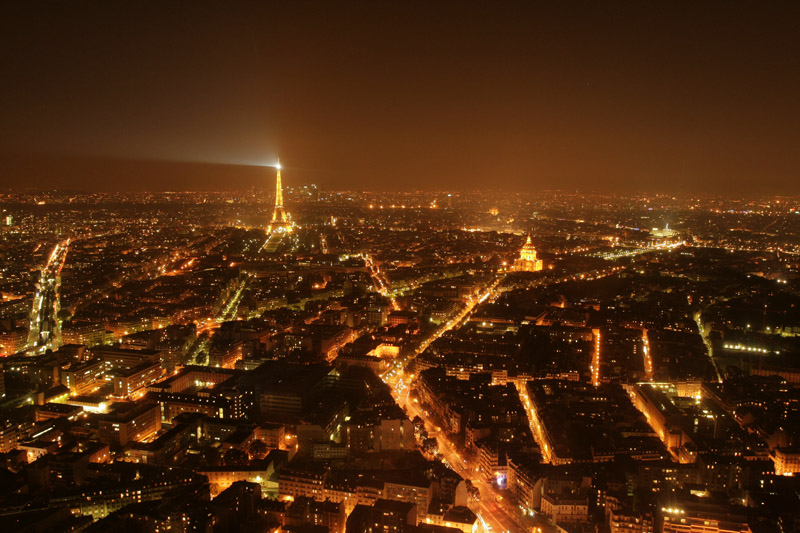 Photograph by JOHN NIRAVONG Fantastic shot of the beautiful city of Paris at night by my friend John Niravong. The photograph was taken from the 56th floor observation deck of the Maine-Montparnasse Tower, a popular destination for visitors seeking unrivaled views of the majestic city below. Tour Maine-Montparnasse (Maine-Montparnasse Tower), also commonly named Tour Montparnasse, is a 210-metre (689 ft) tall office skyscraper located in Paris, France, in the area of Montparnasse. Constructed from 1969 to 1972, it was the tallest skyscraper in France until 2011, when it was surpassed in height by the Tour First (231 metres / 758 feet). It is currently the eleventh tallest building in the European Union. [Source] via JOHN NIRAVONG |
Posted: 28 Oct 2011 06:12 AM PDT  Welcome to the Friday Shirk Report where you will find the 20 funniest images, 10 most interesting articles, and 5 most viral videos from the previous week of sifting. Enjoy! *For those that prefer the links open in a new tab/window, try holding the CTRL key whilst clicking a link with your mouse Stay sifty my friends 20 IMAGES- Gore and Clinton hamming it up- How to drink stealthily - Automatic Swimming - “This is even more painful than it looks” ||| for reference - Some classy Capybaras - Rear entrance - A peacock taking off - 3 movies 1 shirt - I guess it could have been worse… - This pumpkin > all other pumpkins - Great headline with excellent use of CAPITALIZATION - Oh Philosoraptor. The Sifter has missed you - Spidermen - Father of the year? - Interesting disclaimer before Tom & Jerry cartoon comes on - WTF?!? - Classic Chappelle - Whatever this is it cannot be unseen - Oh sh*t green light! Better run back to the sidewalk - Young at heart 10 ARTICLES- Beautiful collection of skylines around the world- Fascinating read on ‘subject validation’ by David McRaney - Today I learned that Holland was on of the world’s biggest Coke manufacturers - Wall-Street: Winning vs Cheating? - Chicks with Guns. Exactly what it sounds like - Rider on the Storm - Ever heard of the Mexican Mafia Prison Gang? ||| Link to longer PDF if you’re so inclined - Incredible gallery of aerial photographs of London at night - Whether you support WikiLeaks or not, the blockade by Visa, Mastercard, Paypal and others is an attack on free speech - The Creation Myth: Xerox PARC, Apple, and the truth about innovation by Malcolm Gladwell 5 VIDEOSThx for sharing Carly! Hire this man Thanks for sharing @BigEdd! YOU STAY CLASSY THIS WEEKEND! |
| You are subscribed to email updates from TwistedSifter | |







No comments:
Post a Comment